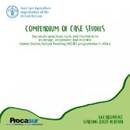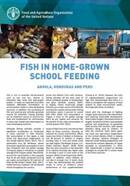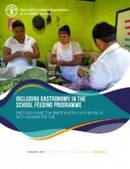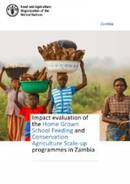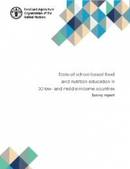Публикации
The first live broadcast Learning Route “Successful practices, tools and mechanisms to design, implement and monitor Home-Grown School Feeding (HGSF) programmes in Africa” jointly promoted by the Food and Agriculture Organization of the United Nations (FAO) and Procasur took place from the 7th to the 12th of December 2020 in Kenya. Twenty-two government officials and decision-makers attended this Learning Route; amongst them: seven (07) Kenyan government officials travelled from Nairobi to Busia and Siaya Counties to visit and share knowledge with local HGSF initiatives, such as: the BFN Project developed in Busia and the Nyamninia Primary school in Siaya County. The remaining fifteen participants from selected African countries (Burkina Faso, Cameroon, Egypt, Ghana, Lesotho, Rwanda and Uganda) experienced the same learning journey on a virtual modality through live broadcast connections and direct interactions with key actors in the field.
Kenya thanks to its well-established HGSF model was an inspiring host, showcasing the differentiated approaches and strategies developed at national level to facilitate small farmers’ inclusion in the school meals. The “direct cash transfers to school” as a food procurement mechanism, the multisectoral and multi-actors engagement, the nutritional and biodiverse provision of school meals are some of the innovations analyzed during the Learning Route. This compendium presents main lessons learned, key innovations and good practices of each case analyzed during the learning route.
FAO supports the Governments of Angola, Honduras and Peru in developing strategies for home-grown school feeding programs to improve nutrient adequacy of meals fed to schoolchildren through the inclusion of fish products. This short paper highlights case studies from these countries, where fish products for home-grown school feeding programs were developed and tested, with nutritional benefits for children and adolescents as well as for the broader community through improved livelihoods for small-scale fisherfolk. The paper includes recommendations for other countries to learn from this experience in order to integrate these nutrient-dense foods into home-grown school feeding programs, as well as recommendations for future investments.
Each year, the Guatemalan State invests about 1 869.2 million Quetzals (USD 245 million) in the national School Feeding Programme (PAE, by its acronym in Spanish), which feeds 2.4 million children. This research estimates that, by including gastronomy in the PAE, it is possible to prevent in a school year (180 days), the waste of 561.6 tonnes of food, equivalent to USD 864 000, or 0.35 percent of the invested budget. This food waste is partly due to children refusing to eat food that they do not find tasty.
These data are derived from a small-scale, pre-and post-design pilot intervention in an educational institution in the Department of San Marcos, Guatemala, where the gastronomic quality of a school menu improved due to a back-up training provided by a professional chef for the PAE cooks. In order to identify whether there were differences before and after the intervention, a survey was applied to a sample of children aged 8 to 14, which resulted in an increase in acceptance (from 84 percent to 90 percent) and a decrease in food waste (by 1.3 grammes on average per child per day).
Taking as a reference the cost of implementing a gastronomic laboratory in the Chilean PAE (0.017 percent of the total budget), and counterbalancing it with the resources corresponding to food waste in the PAE Guatemala (0.35 percent of the total budget), it appears clearly that investing in gastronomy is a useful mechanism to optimise the use of public resources invested in the PAE.
For this reason, based on the findings of this study, it is highly advisable to incorporate gastronomic personnel into the PAE team, who can advise throughout the entire implementation chain.
This impact evaluation report quantifies the impacts of Zambia’s Home Grown School Feeding (HGSF) programme – one of the country’s biggest social protection programmes – and the Conservation Agriculture Scale Up (CASU) project, both alone and in combination with each other. The report looks at how the programmes affected farm production and other livelihoods, the food security situation of the household and of school-going children and the educational outcomes of the latter. The report concludes that each programme or programme component considered in isolation meets their strictly defined objectives, but their combination leads to unintended conflicting influence on certain outcomes, thus highlighting the need for increased coherence between programmes. The household and community surveys for the evaluation of the programmes took place between October 2017 and January 2018. The total sample size is 3 636 households and a total of 72 community interviews were also conducted.
Progressively more countries are reportedly incorporating school-based food and nutrition education (SFNE) into their education, nutrition and school feeding policies, acknowledging its role in impacting children’s food outlooks and practices, and that of their parents, families and the community. Despite this increasing interest and global recognition, there is no clear picture of SFNE implementation at school level, which makes it challenging to identify gaps, take corrective measures, make reforms or introduce new policy initiatives.
Framed under FAO’s school food and nutrition work, the aim of the survey was to determine the current role, approach, scope and linkages of government run SFNE in a sample of low- and middle-income countries. In particular, this survey is part of the package of outputs that FAO developed to establish the foundation for reshaping and carrying the SFNE work forward, in terms of effectiveness and scope.

